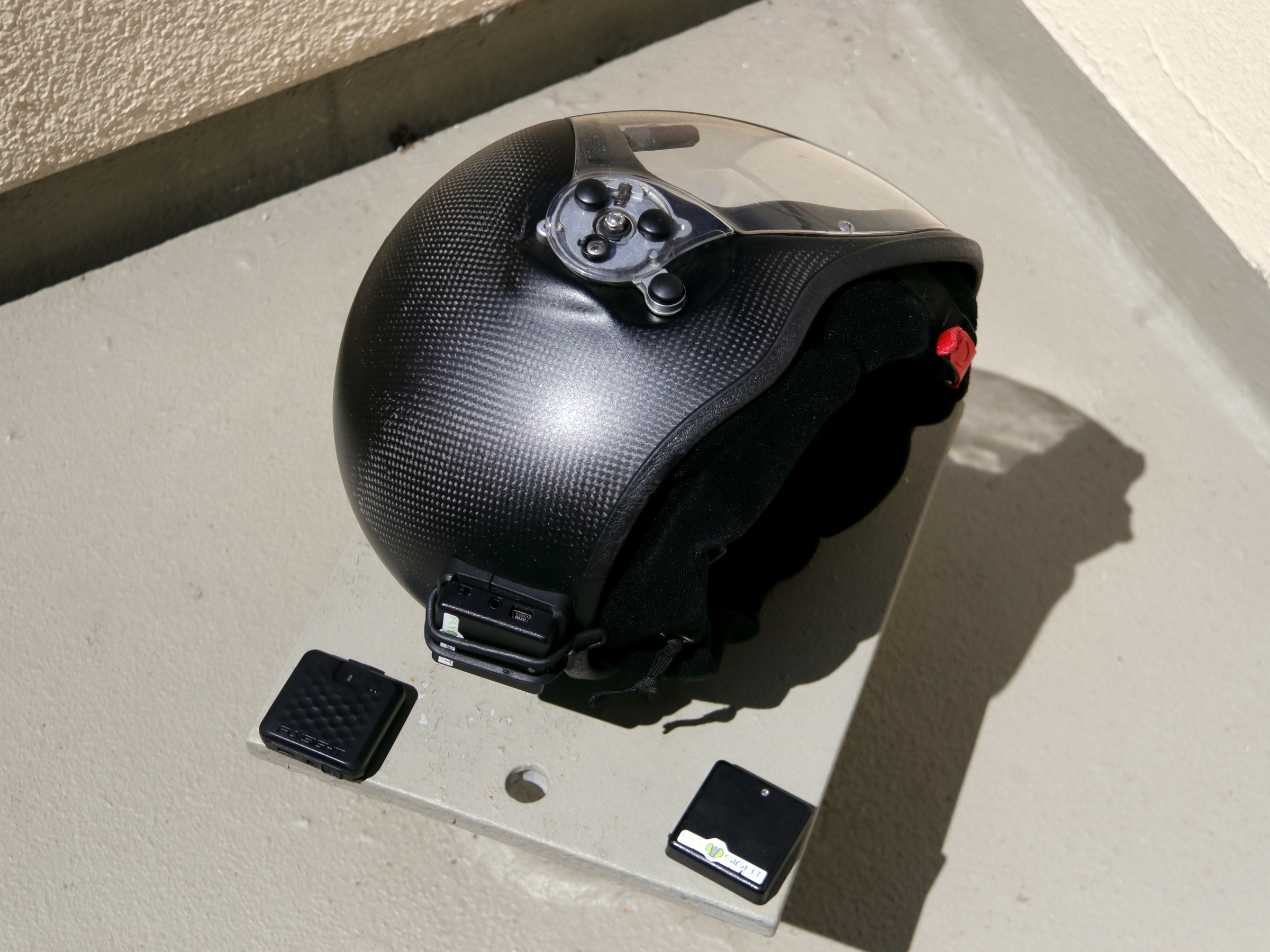There’s a lot of misinformation about how to prepare and set up your FlySight 1 or FlySight 2 for having a great day. This post debunks the warm up and activation misconceptions lots of jumpers have, based on recommendations from Michael Cooper of Bionic Avionics, and from national and international competition judges. In general, don’t wait until you’re on the aircraft or about to board it to turn your device on if you want to minimize the risk of data loss and having wasted an important jump because the track file is corrupted. Why and how? Read on!
What to do
- Take your FlySight(s) outside, with a clear view of the sky, turn them on, and leave them there for 15 minutes before you turn them off and bring them inside
- Ensure the FlySight is not in your helmet, or obstructed in any way
- At gear call (10 minutes prior to boarding): take your FlySight(s) outside, turn them on, and leave them be for at least 3 minutes
- Zip up your suit, put on your rig, kiss your beloved before the jump if they’re around – 3 minutes
- Get the FlySight and WITHOUT TURNING IT OFF walk to the boarding area
- Leave the power switch alone during the climb to altitude
- Turn off the FlySight at any point AFTER you land
Why?
Because FlySight needs to have as many satellites locked as it can, and the longer it has a view of the sky, the higher the number of satellites it’ll see and use for measurements. And if it loses signal, there’s some caching going on that the two warmup operations help keep current. The device will lock on more satellites faster if it’s warmed up before every jump even if it has a tendency to lose signal.
What about battery life?
As long as you charge your FlySight all the way to 100% / green light before you start your day, a FlySight is good for at least 8-9 hours of jumping non-stop. I have logged 10+ speed skydives in a single day, following this procedure, and have never run out of battery.
Are you sure this works?
Yes. I’m 100% sure that this works for FlySight 1 and FlySight 2. I train with three FlySights on my person: one in the occipital region of my helmet, one inside the helmet, and one in a purpose-specific pocket on the side of my training rigs. Aside from very rare issues with solar flares and cosmic rays, I’ve lost fewer than 3 tracks since I started warming up my FlySights following these recommendations – since 2019.

What else to know?
There are significant hardware differences between FlySight 1 and FlySight 2. In empirical tests, FlySight 2 has a tendency to lose signal inside the aircraft and inside a carbon fiber helmet. I put the FlySight 2 in the rig pocket, where there’s a lower probability of interference, and use a FlySight 1 inside the helmet. This setup has worked fine when riding to altitude aboard Cessnas, Supervans, Shorties, Twin Otters, Pilatus Porters, Kodiaks, and I’m sure I forgot others.
The FlySight 2 has a ceramic antenna. It’s optimized for picking up signals better and faster if exposed to the sky, but it has a harder time dealing with obstacles and shielding (fuselages and carbon fiber helmets make good Faraday cages). FlySight 1 is more resilient to losing satellites on the way to altitude overall, but it also has less functionality.
Helmet-mounted initial warmup
My setup has a FlySight 1 in a Cookie mount because it’s what I’d expect in competition. FlySight 1 can be warmed just fine with the helmet on the side, like in the image. FlySight 2, on the other hand, may or may not pick up the satellites and stay solid green if it’s presented to the sky sideways, like in the photo. If you have a FlySight 2, ensure that it can see the sky before and it’s making happy blinks for 15 minutes at the start of the day
My FlySight 2 stopped blinking on the way to altitude! Oh noes!
Don’t worry, don’t panic. That’s why you warmed it up for 15 minutes in the morning and for at least 3 minutes before you headed to the aircraft. If your FlySight 2 is mounted atop or in the back of the helmet, there’s a very high probability it’ll start blinking in the 2 seconds you’re at the door positioning your exit and spotting your trajectory. There’s very low probability it’ll miss anything if you did the full warmup procedures.
Conclusion
As long as you top up your devices before jumping, don’t worry about battery life and warm them up as described here. Go have an epic day, #sendit, #gofast, #safetythird, and blue skies!
